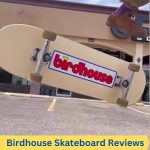Skateboarding, like any other sport requires you to know certain techniques and skills before you can master them. To be able to do tricks, carve hard turns and ride up hills efficiently, you need to first learn how to stop on a skateboard without falling off (or at least minimize falls).
No one wants to end up speeding out of control and wiping out in front of their friends (or worse, a crowd of strangers). That’s why it’s essential to learn to slow down and brake a skateboard. There are a few methods to choose from, and here, we’ll break them down for you step by step. From the classic foot brake to more advanced techniques like power sliding.
See which are the best skateboard brands in 2025 to pick a good board for you.
Contents
How to Stop on a Skateboard – Braking Techniques
The easiest way to stop is just by slowing down, however, if you want to stop quickly and in an emergency situation, this isn’t the best option. We will go over different types of stopping techniques that are suitable for beginners through experienced riders.
I’m not saying this is the only method of braking, but our methods work. You will find yourself stopping with more control, fewer falls and most importantly – safety.
Note: always wear protective gear while riding a skateboard to minimize the chances of injuries.
- Foot Brake
- Front Brake
- Hand Brake
- Push Backward
- Jumping Off
- Tail Scraping
- Controlled Slide Stopping
- Power Sliding
- Heel Scrapping
- Skateboard Pop in the Hand
1. Foot Brake
The most common technique is to use your foot as a brake. To perform this action, simply push your back foot onto the ground and drag it along the surface so that there is friction between the sole of your shoe and the surface.
While performing this skateboarding stopping technique, your front foot’s toe should be facing the front tail of the board. Also, the front food should have a proper grip to control the board. The back foot must be flat on the surface to cause good friction.
2. Front Brake
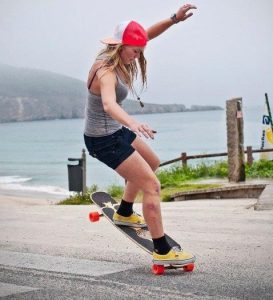
Once you find the board slowing down, transfer your weight on the front foot and slowly put down your back foot. Remember not to lose the balance.
Learn about skateboard trucks!
3. Hand Brake
Stopping a skateboard using a hand brake is quite tricky but efficient for low-speed rides. To perform this braking method, place both hands at the front of your board and use them to press down onto the surface. Squeeze hard to create enough friction to slow down the speed.
We don’t recommend using the front brake if you are riding at any speed as it could result in a fall. Ensure you have slowed down sufficiently before trying this technique. This braking method uses your arm as a shock absorber; therefore, be prepared for your whole body to shake when using this technique.
Note: do not use the front brake if you are riding over any obstacles as it could cause a loss of control or dangerous situations.
Electric skateboards are fun to ride and stop. Choose a cheap electric skateboard and learn to ride and brake using a remote control.
4. Push Backward
The push backward technique is effecting to stop on a skateboard downhill. When using this braking method, the only thing that has to be done is shift your weight backward to counterbalance the speed and let it do all the work for you. If performed correctly, the board will slow down gradually.
Place your back foot on top of the back truck and apply pressure, lean backward but do not lose your balance. The faster you are going, the more force is needed to exert on the board. Remember not to jump off without knowing how to control your speed so that you don’t get hurt.
5. Jumping Off
This is a classic and quite simple way of stopping on a skateboard. Simply jump off the board when you are going too fast and let gravity slow you down. While jumping, try not to fall over or hit your head as it could result in injury.
Please note that this method of braking should be done on grass or another soft surface as it might hurt other surfaces. If you jump off the board and land on other objects such as rocks, concrete etc. then there will be a lot of noise and possible damage to the board or your leg.
Be warned that this can result in tripping or falling over; therefore, do not attempt unless you are certain about it.
6. Tail Scraping
This skateboard stopping technique is done with complete control over the board. To perform tail scraping, you will be applying pressure on the tail of the board to drag the tail on the surface.
It will create friction and work as a brake to bring down your speed smoothly and gradually.
One disadvantage of this method is that you will be losing balance every time you are trying to slow down or speed up. This could lead to a fall if not performed correctly.
Make sure you are using this technique in open terrain and not in an obstacle-ridden area.
7. Controlled Slide Stopping
The controlled slide is a popular technique used by many professional skateboarders. This technique involves rubbing the back wheels against the surface and gradually reducing speed without losing balance or control of the board.
To start with, we recommend that you perform this method on an open grass field or some other soft ground without any obstacles as it could cause injury.
The following are the steps to performing a controlled slide:
- Shift your weight backward slightly to prepare for slowing down or speeding up.
- Drag your back wheels for friction to slow down the board gradually and smoothly from any speed level.
- Make sure you don’t fall over and hit your head.
This is an advanced method and should be performed by skilled riders only as it could lead to injury if not done correctly.
8. Power Sliding

The method is very effective but needs perfect timing to be performed correctly. It requires some practice to master the art of power sliding. A wrong move or slight mistake can break your board or injure you severely.
Remember to slide the board only when your wheels are clean, otherwise, they will bump and you’ll end up on the ground.
9. Heel Scrapping
The heel scrapping technique is very similar to tail scrapping, the only difference is that you scrap your on the surface to create resistance.
To perform this skateboard stopping method, shift your weight backward and push to the tail to lift the nose of the board. Apply enough pressure on the tail so that your back foot tail scrapes against the ground and gradually slows down the speed. This will work as an effective brake but can damage surfaces such as pavements.
10. Skateboard Pop in the Hand
The skateboard pop in the hand works on the same principle as a “wheelie” in a bicycle. This method is employed for fine control over a skateboard and slowing down gradually.
To use this method, simply lift up the front end of the tail to bring the wheels off from the ground by applying force on the rear tail.
This is a safe and efficient way of stopping your skateboard, but should only be performed by expert riders as it requires great balance and control over the board to perform this technique without falling or losing control.
How to Stop on a Skateboard Downhill
Skateboards ride faster on a downhill and it becomes difficult to stop them. Wheels may lock up on you while riding downhill at excessive speeds. This could lead to loss of balance or losing control if not braking correctly.
We suggest shifting your weight backward slightly and dragging the back wheels to create friction against the surface. As a result, it will reduce the speed.
These two are the safest techniques to stop the skateboard on the downhill;
1. Carving

You have to constantly shift your weight from one side to another so that the board slows down gradually.
This technique should be performed by expert riders only as it needs skill and practice to control the speed of your skateboard while riding on a steep downhill slope.
2. Cross Braking
Cross braking is an advanced method that should only be performed by skilled riders as it can cause severe injury if not done properly. This method involves applying force on the brakes at both front and back wheels simultaneously to reduce speed.
To make a smooth stop, apply pressure slowly and gradually from your toes towards your heels. This will help you avoid sudden jerks or loss of balance that can damage your board or cause injury.
Note: Inexperienced skateboarders should stay off steep hills. It can be really scary for beginners if they’re not ready. Remember that braking too hard is just as dangerous as not braking hard enough.
You should also avoid using your front brake for stopping power when riding at high speeds because it can cause you to lose control.
How to Stop on a Cruiser Skateboard
Cruising is a popular type of skateboarding that can be done to commute around your neighborhood. It is also a great way to get exercise and enjoy some fresh air while you ride your board. But sometimes, you may want to stop your board without falling or losing control and potentially damaging surfaces and surrounding property.
The following techniques can be applied to stop a cruiser skateboard;
1. Carving
This technique is best suited when you are riding on pavements or surfaces with obstacles. To slow down gradually, turn the board at an angle while shifting your weight to one side of the board.
This will bring the wheels in that direction and allow them to roll slowly without causing any damage.
2. Cross Braking
This technique is the same as that of a downhill skateboard. Apply pressure to both brakes at the front and back wheels simultaneously to slow down gradually without jerking or losing control.
3. Coasting
When you are going at a very low speed, simply shift your weight forward until you feel the front wheels lift off the ground. This will allow you to coast along slowly without any effort on your part.
This is a basic technique that new skateboarders can master quickly and safely, but its best suited for surfaces without obstacles or barriers.
4. Pushing
When you want to stop at a high speed and it’s not possible to apply the carving or cross braking techniques, you should use your feet. Pushing your skateboard forward for a few feet with both hands can help stop the board without causing any damage to the surroundings.
But remember that this method is best suited when there are no obstacles in front of you such as slow pedestrians or vehicles on the road.
5. Emergency Handbrake
Most cruiser skateboards have a special grip tape design at the front to prevent riders from sliding off the nose when going downhill. You can use this strip of thick grip tape or rubber to stop your board quickly by pushing down on it with one hand while holding onto the back of the board with your other hand.
This is a very useful technique that can save you from serious injury when performed properly.
Reasons to Learn Stopping on a Skateboard
Reasons why learning how to stop on skateboard matters:
1. Its Safer – When skaters don’t know how to control their speed, they tend to either fly down hills and lose control, or smash into something at high speeds. If you know how to slow yourself down on a skateboard, you are less likely to injure yourself and others around you due to a lack of control.
2. It’s Faster – By knowing how to stop on a skateboard in certain ways, you can actually pick up speed in areas such as flat ground by carving fast turns with your back foot.
3. It helps You Get Around Quicker when commuting – Want to get somewhere but don’t want to walk? By learning how to brake on a skateboard in the right ways, you can get around places quicker than walking.
4. It enhances your Skating Technique – When you learn how to stop on a skateboard, it will give you more control and stability while skating. This means you’ll be able to do tricks and ride down hills with ease and minimal risk of falling off and injuring yourself.
Final Words
Now, you should have a better understanding of how to stop on a skateboard. Remember, braking a skateboard properly is important not only for daily commuting but also for your own safety and those around you.
Also, remember that each technique has its own advantages and disadvantages; you need to know which one is best suited for your situation and road condition before applying it.
If you are struggling to learn skateboarding, choose the right board for you. Here are different types of skateboards for beginners, select the right one for your needs.
Frequently Asked Questions
How do you stop on a skateboard fast?
You can stop on a skateboard fast by performing power slides. Power sliding works on the principle of locking one back wheel so that it skids rapidly across the surface. This creates friction, slows down the speed and brings it down to a complete stop.
The method is very effective to stop fast skateboard but needs perfect timing to be performed correctly. It requires some practice to master the art of power sliding. A wrong move or slight mistake can break your board or injure you severely.
Does falling off a skateboard hurt?
Yes, falling off a skateboard hurts but the joy of learning and rolling keep encouraging skaters to get on a board again. It is advised to always wear protective gear while riding a skateboard to minimize the chances of serious injuries.
Is learning to ride a skateboard hard?
Yes, learning to ride a skateboard is hard and it requires a lot of practice and patience. I found the consistency was the key to skate like a pro. It took me around 2 weeks to balance my body on a skateboard and roll the board for a few meters without falling. However, continuous practice with dedication will make it easier for you.
- Best Electric Skateboard for Big Guys (Heavy Duty E-Boards) - June 3, 2023
- Skateboard Clothing Brands to Make You Stand Out In 2025 - May 31, 2023
- 90s Skateboarding Brands: The Rise and Fall of the Legends - May 28, 2023

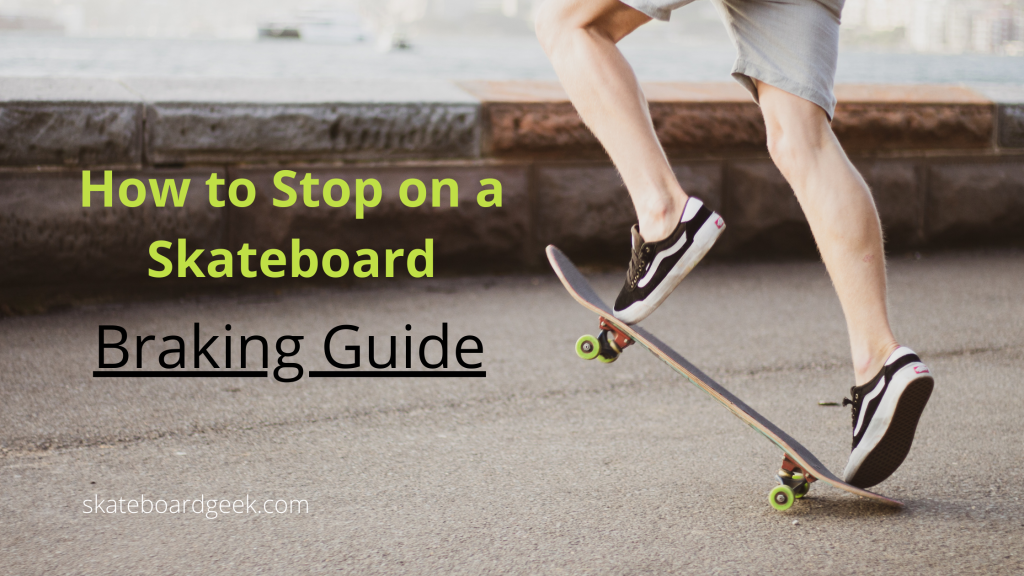
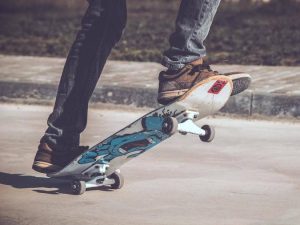
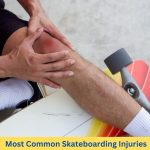
![CCS Skateboard Reviews - [Why They Are Trusted & Popular] ccs skateboard reviews](https://skateboardgeek.com/wp-content/uploads/2023/05/ccs-skateboard-review-150x150.jpg)
![How to Take Trucks off a Skateboard Like a Pro? [The Right Way] how to take trucks off a skateboard without a skate tool](https://skateboardgeek.com/wp-content/uploads/2023/05/how-to-take-trucks-off-a-skateboard-without-a-skate-tool-150x150.jpg)




